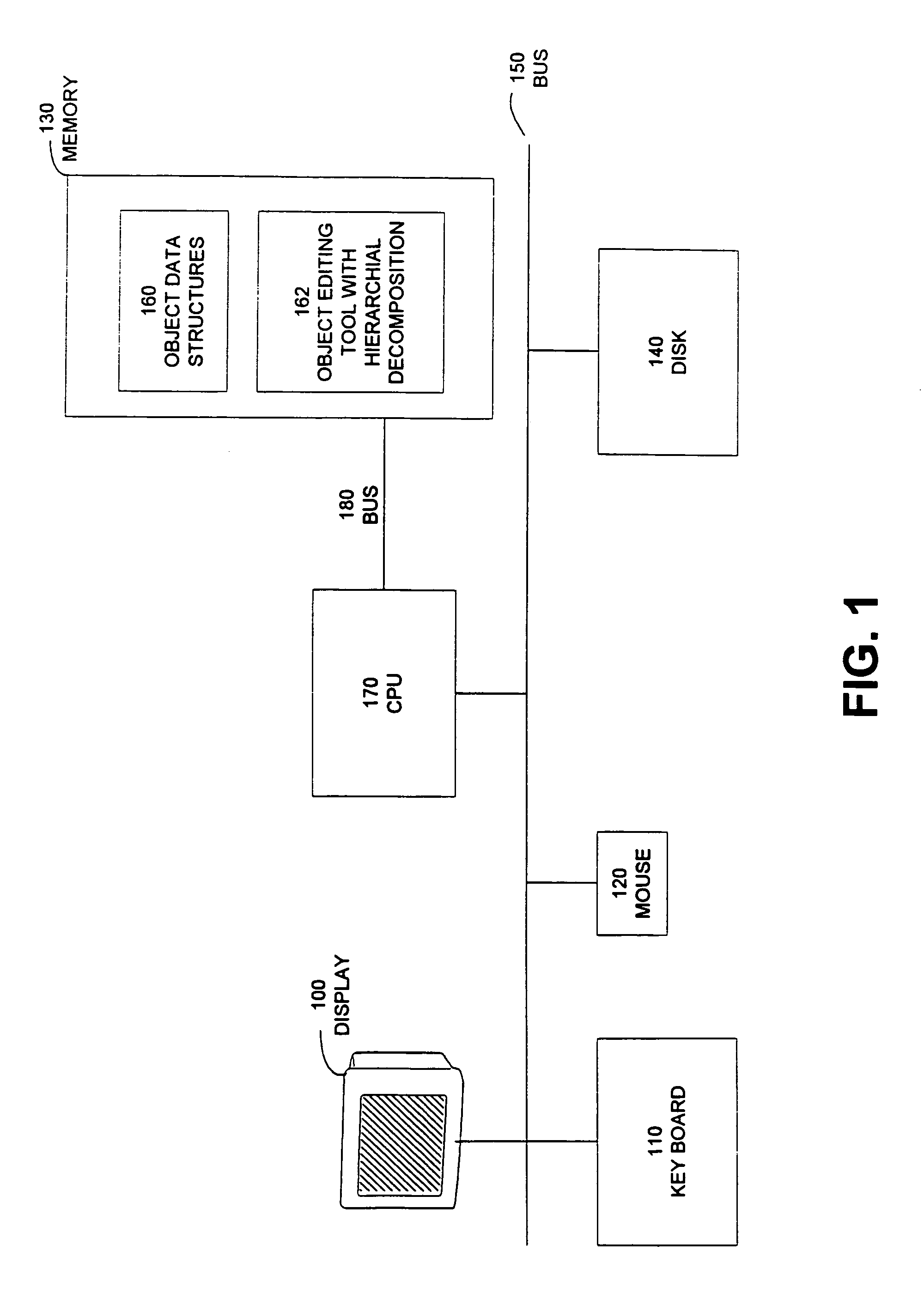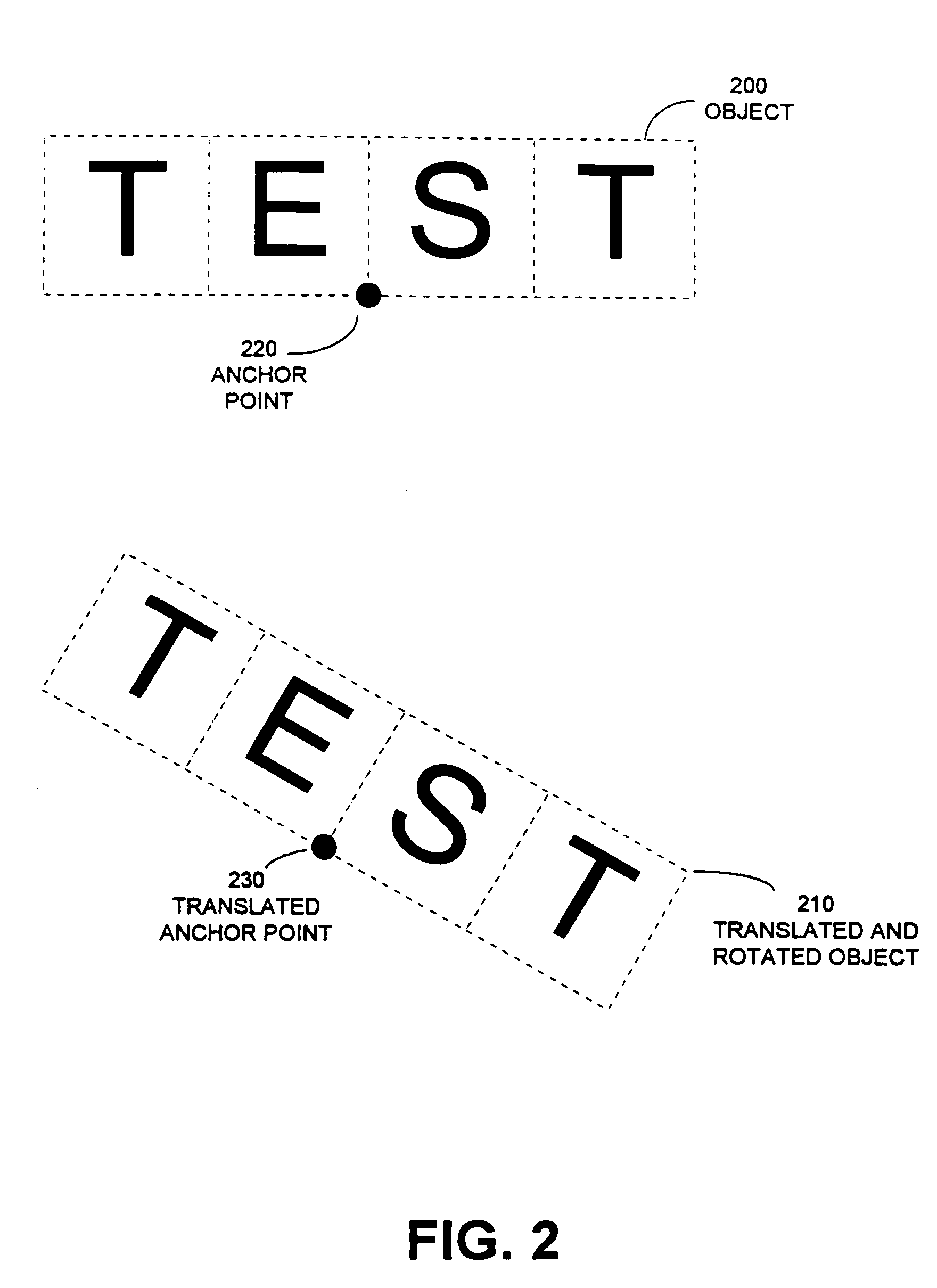Methods and apparatus for supporting and implementing computer based animation
a computer and animation technology, applied in the field of computer generated animation, can solve the problems of wasting a large amount of effort for groups of objects, requiring a large amount of time for a large number of objects, and one particularly cumbersome task
- Summary
- Abstract
- Description
- Claims
- Application Information
AI Technical Summary
Benefits of technology
Problems solved by technology
Method used
Image
Examples
Embodiment Construction
[0091]In an embodiment of the invention, animated text objects may be altered by replacing certain characters by a visibly different character of similar size or shape, in order to avoid altering the overall perception of the animated object.
[0092]In alternative embodiments, a graphic object might be altered by changing one sub-element in a way that is immediately apparent, without perturbing the animation of the full object. For instance, the head of an animated character could be replaced by a colored oval during the whole animation sequence, and this would serve as a watermark.
[0093]The embodiments described above meet the criteria listed for watermarks, as:[0094]The resulting animation is still useful and recognizable by the viewer.[0095]By altering the objects in place, the watermarking method avoids running into the problem of obfuscating elements of importance to the viewer.[0096]As the alteration impacts all frames, it would require the unscrupulous user to fastidiously corr...
PUM
 Login to View More
Login to View More Abstract
Description
Claims
Application Information
 Login to View More
Login to View More - R&D
- Intellectual Property
- Life Sciences
- Materials
- Tech Scout
- Unparalleled Data Quality
- Higher Quality Content
- 60% Fewer Hallucinations
Browse by: Latest US Patents, China's latest patents, Technical Efficacy Thesaurus, Application Domain, Technology Topic, Popular Technical Reports.
© 2025 PatSnap. All rights reserved.Legal|Privacy policy|Modern Slavery Act Transparency Statement|Sitemap|About US| Contact US: help@patsnap.com



